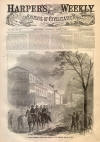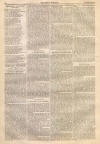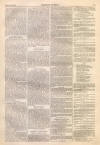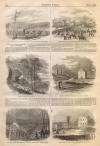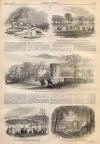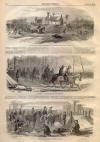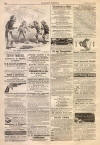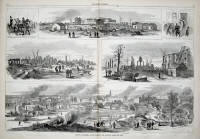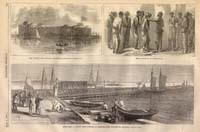Civil War in the Carolinas
|
|
This Site:
|
APRIL 1, 1865.] HARPER'S WEEKLY. 197 WINNSBOROUGH, SOUTH CAROLINA.GENERAL MOWER FIRING THE BLAKELY GUN ACROSS THE PEDEE.(Previous Page) By the 14th of February both wings were across the North Edisto, Orangeburg had been occupied, the rebels flanked out of Branchville, and SHERMAN'S right wing had made fifteen miles on the road to Columbia. On the afternoon of the next day the rebel fortifications on the north bank of the Congaree, and covering the approach to Columbia, were carried by the Fifteenth Corps. Making a feint of crossing below on the river, HOWARD real- beauty. Our artist has given a view of crossing as it appeared at sunset February 17, 1865, spared from the general conflagration, which on the night of the 17th, destroyed nearly the whole city. The order of architecture followed is the Corinthian. The capitals of the columns are delicately carved in marble. A great deal of this carved work, stored in sheds about the Capitol, was burned. No. 1. Lieutenant John Huldman, 129th Illinois, Nov. 13. " 2. L. D. Fairfield, 89th Ohio, Nov. 8. " 3. Capt. David Hansbury, 4th Ind. Battery, Nov. 22. C. K. Ekings, 3d N. J. Lieutenant A. C. Spafford, 21st Ohio, Oct. 14. " 6. James E. Wenrick, 19th Pa. Cavalry. ,, 7. John Jackson, 4th Ind. Cav., Nov. 21. From Columbia SHERMAN pushed straight northward, as if moving on Charlotte. KILPATRICK was ordered to advance on Chesterville, while the Four- sketch. Gold Mine, a few miles father east and also affords a characteristic picture. The Twentieth. Corps entered Chesterfield March 2, 1865. The next day the whole army was across Lynch's Creek, with the advance already at Cheraw, on the Great Pedee. As the rebels fled across the river Major-General MOWER sent after them a few shells from a Blakely gun which, he had captured, and which had been presented to the State of South UNITED STATES ARSENAL AT FAYETTEVILLE, SOUTH CAROLINA.ly crossed at Saluda Factory. The factory was burned on the 17th. At 3 o'clock, on the morning of the 17th, Columbia was surrendered. We give on our first page a sketch illustrating General SHERMAN'S entry into this city the capital of South Carolina. The railroads for twenty miles about the city were thoroughly destroyed, and the public property burned. On pages 200 and 201 we give several sketches of Columbia. The State Capitol, which is not finished, has great architectural The great fire destroyed several hundred buildings, and deprived many poor families of their homes. SHERMAN tried hard to check the destruction, but without avail. On the 19th 20,000 bales of cotton were burned. Across the river from Columbia is Camp Sorghum, where our prisoners were kept. Our artist has numbered the graves, and we give below the names to correspond. These men were nearly all murdered by the rebels. teenth Corps followed in his rear, destroying the railroad on the way. The other three corps joined the Fourteenth at Winnsborough. The Fourteenth, with KILPATRICK, still pushed northward, while the other three corps moved more to the eastward, toward Cheraw. On the 23d of February the Fourteenth Corps began the difficult crossing of the Catawba River at Rocky Hill. It was not till March 1 that this corps was able to move on to Hanging Rock, of which our artist has given a picturesque Carolina by her citizens residing abroad. Twenty-five pieces of artillery were taken at Cheraw, besides eighteen tons of powder and several thousand bales of cotton. On the 11th of March the entire army entered Fayetteville, where communication was established with Wilmington by means of the Cape Fear River. During the march 85 cannon were captured, and 4006 prisoners. Over 15,000 refugees were received; hundreds of miles of rail road and vast quantities of cotton were destroyed. CAMP SORGHUM, OPPOSITE COLUMBIA, SOUTH CAROLINA.SALUDA FACTORY, NEAR COLUMBIA, SOUTH CAROLINA.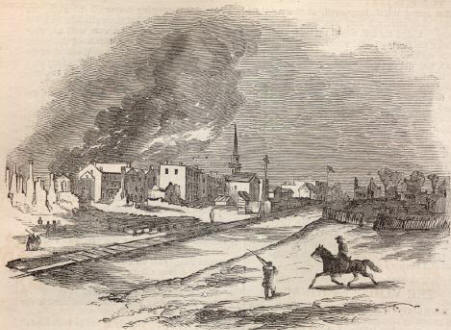 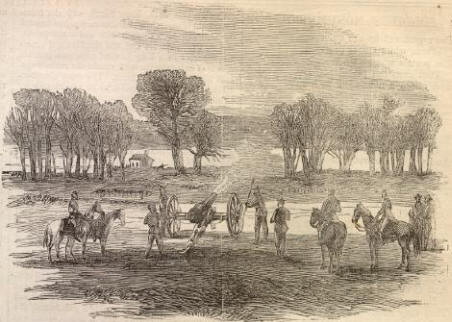 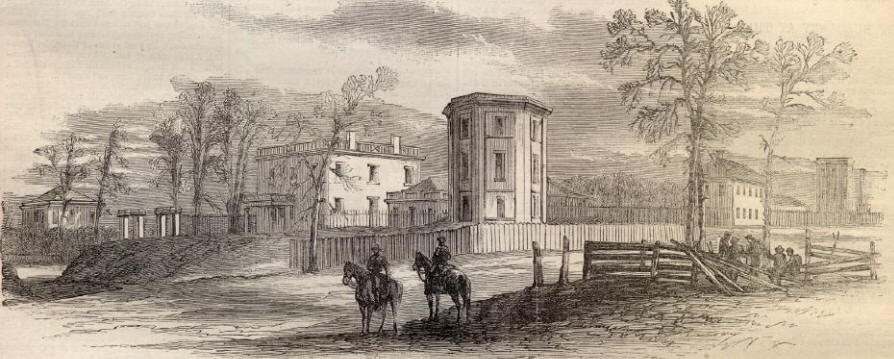 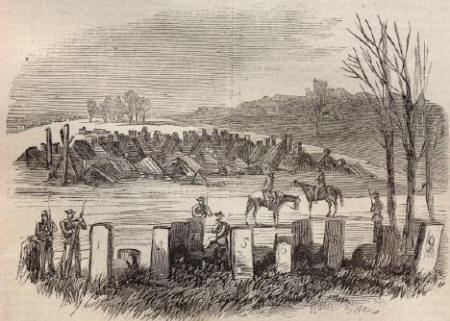 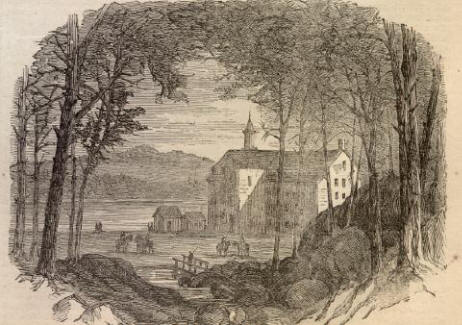 |
||||||||||||||||||||||||
|
|
||
|
|
Site Copyright 2003-2018 Son of the South. For Questions or comments about this collection, contact paul@sonofthesouth.net |
|
|
Are you Scared and Confused? Read My Snake Story, a story of hope and encouragement, to help you face your fears. |
||
